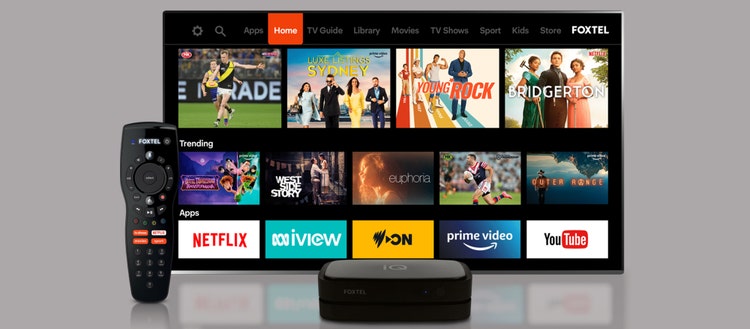How Foxtel builds winning experiences up to 4 times faster with Adobe Experience Cloud

Image source: Foxtel
Foxtel is Australia’s leading subscription television service for good reason: Its customers have access to a wide range of entertainment, including live sports, world-class dramas, and blockbuster movies from one entertainment hub.
While some media companies struggle to compete with a growing number of streaming and video on-demand services, Foxtel has taken a different approach. It aims to become a partner and media hub where customers can find all their services in one location. Customers can even bundle their Netflix subscriptions with their Foxtel bundles in one easy package.
“As the amount of content grows, it becomes easier for customers to get overwhelmed by choices,” says Aris Kinnas, director of Digital at Foxtel. “Our challenge is finding ways to deliver an awesome experience by making it simple and easy to find what they’re looking for.”
Working with partner Helium, Foxtel uses Adobe Experience Cloud apps to build personalized web experiences that make it easy for customers to uncover and subscribe to exactly what they want. Experimentation and optimization are also important parts of finding new ways to present information. The faster that the digital team can run tests, the more responsive it can be to customer needs and the more revenue that comes in.
Kinnas’ approach to addressing this challenge was to rethink the traditional experience optimization cycle of “build, test, learn.” With a “test, learn, build” optimization cycle instead, Foxtel now arrives at a winning experience 4 times faster — speed that benefits the company and its customers alike.
Modernizing tradition
Traditional experience optimization cycles start with designing and building a new experience. User experience teams meet with stakeholders to create an experience, at which point it’s handed over to developers to build the assets, code the web pages, and connect to backend systems.
After launching the new experience, the digital team then focuses on testing and optimizing the experience using Adobe Target. The team will come up with different variations for navigation, creative assets, or calls-to-action that they think might improve upon the existing experience.
It isn’t until after an experience is built and tested that the digital team can learn what is resonating with users. Unfortunately, if what they learn from the tests is not what they expected, they are faced with moving forward with an experience that is not ideal or investing more time and resources into a new approach.
An updated strategy: Test, Learn, Build
Foxtel optimizes experiences by starting with tests. User experience teams still meet with stakeholders to design an experience, but this new experience is immediately handed over to its digital marketing partner Helium for testing. In just a few days, Helium can launch tests through Adobe Target to check whether the ideas presented by the user experience team are worth pursuing.
Foxtel looks at the results of the test to learn which experiences resonated with customers. The developers then take over and build a polished, winning option.
By starting with testing, Foxtel spends less time and money rebuilding experiences, which leads to faster time to market. Kinnas notes that this method also makes it easier for people to buy in to new ideas backed by data.
“When you start with a full build, it can be harder to roll back when your experience goes in the wrong direction,” explains Kinnas. “You start thinking about how much time and effort you spent building the experience, and you become reluctant to tear it down. With the test-first approach, we’re starting by validating our ideas. It’s easier to switch directions before investing in a build.”
Test, Learn, Build with Netflix
When Foxtel first partnered with Netflix and started offering Netflix bundles, sales through the website were not as expected. Kinnas suspected that the problem was the new shop page experience, with customers getting confused by the new bundle options. Using the build-first model, it would have taken many months to build, test, and finally land on a winning experience. Instead, Foxtel instructed Helium to create test variations for the Netflix bundle experience. Within a week, Helium found an experience that led to a large increase in website sales.
“There had to be a better way and by jumping straight to testing, we saw results in a week instead of months, greatly boosting our website sales,” says Kinnas. “We continued to iterate on the experience throughout the shopping funnel, ultimately more than doubling website sales.”
Learn more about how Foxtel works with Helium to build better customer experiences and boost revenue with Adobe Experience Cloud.